Indian Space Progress #9: Several standout launches on the horizon for ISRO, Chandrayaan 3 updates, ascending startups and ambitions, and more
There have been so many notable developments in Indian space the past month that this edition of Indian Space Progress was hard to succinctly summarize. What a nice problem to have! Also, I’m happy and grateful to share that these Indian Space Progress monthly reports are now read by 5,000+ subscribers worldwide, shortly following my Moon Monday newsletter. Thank you to each one of you space buffs for reading. It’s still early days for the newsletter as I’m only nine editions in so far so please do provide feedback. 🚀🇮🇳
India to launch first key human spaceflight test amid new ambitions for a space station and a human at the Moon
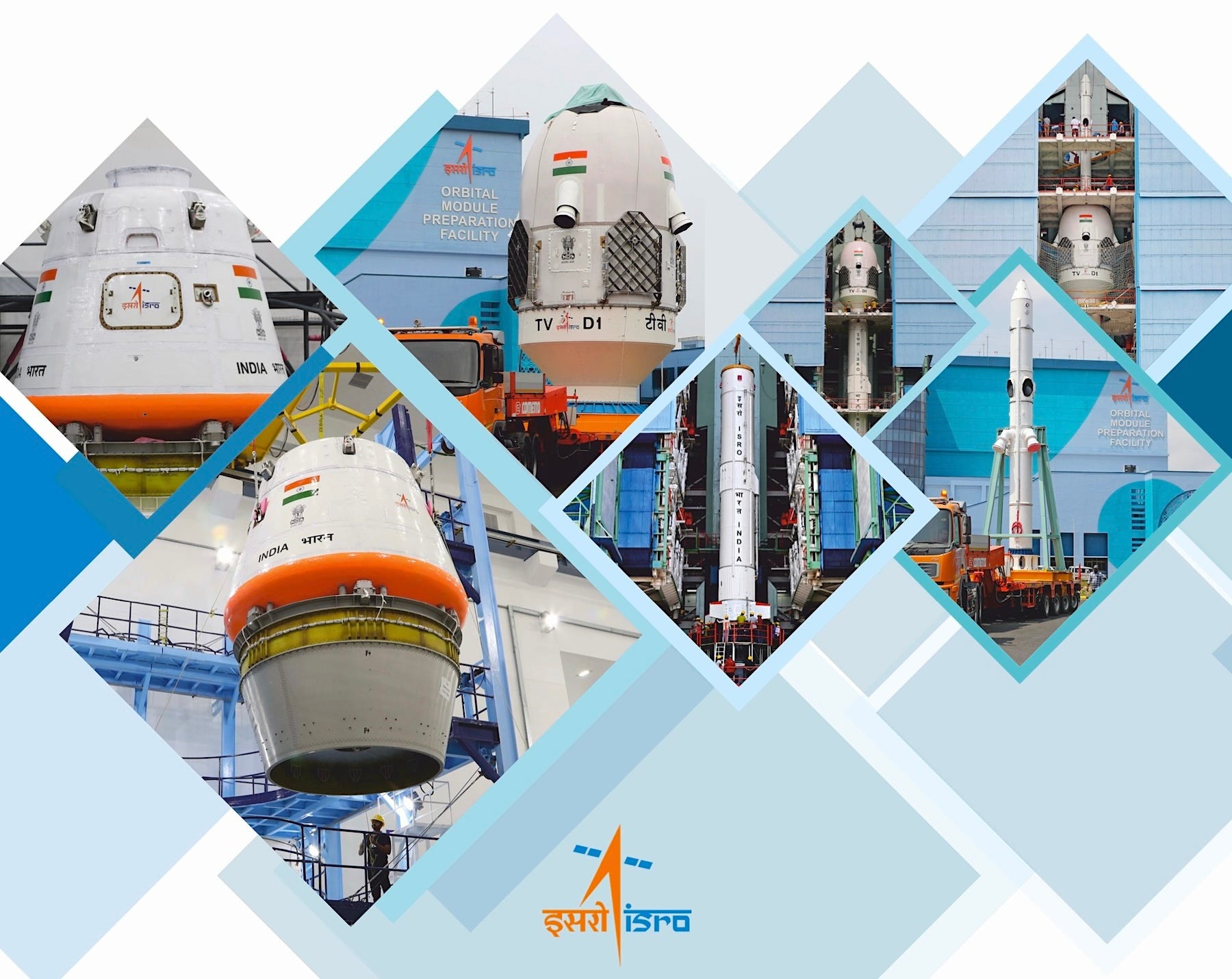
ISRO is approaching two milestone tests in the lead up to India’s ambitious Gaganyaan mission mid-decade, which will indigenously send humans to space.
First, ISRO is in the final stages of preparing to launch the Test Vehicle Abort mission-1, or TV-D1. On October 21, a full-scale, near complete 4520-kilogram Gaganyaan crew module with its escape system will launch on a single-stage liquid rocket to an altitude of 17 kilometers to test autonomous abort, parachute descent, and a sea splashdown about 10 kilometers away from the launchpad. Second, The New Indian Express reports that ISRO is also prepping to better test aspects of the crew module’s parachute system by dropping a representative 3,000-kilogram crew module from a 4-kilometer altitude using a heavy-lift helicopter.
Adding to the growing scope of Gaganyaan beyond the inaugural and initial set of missions, the country’s Prime Minister Narendra Modi directed ISRO today, October 17, to create an Indian Space Station in Earth orbit by 2035. This would be followed by sending the first Indian to the Moon by 2040. To realize these ambitions, the Indian Department of Space (DOS) will develop a roadmap for lunar exploration, which will comprise a series of Chandrayaan missions, the development of a partially reusable Next Generation Launch Vehicle (NGLV), a new launch pad, and more. This is such an exciting time for Indian space, one that I hope will be backed by much-needed substantial budget increases next year.
ISRO about to launch its second space telescope
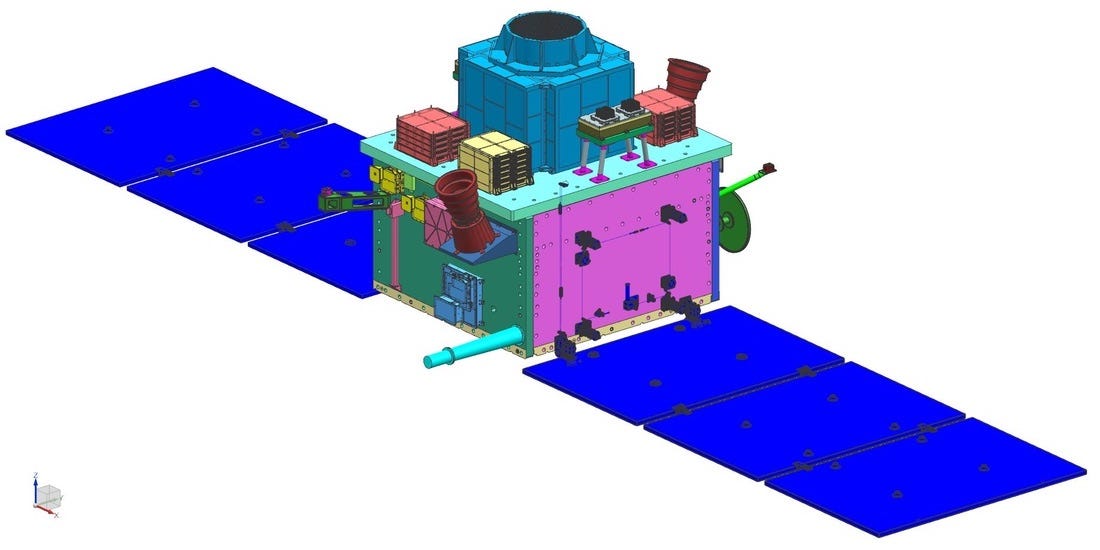
In an interview with Asianet on September 21, ISRO Chief S. Somanath said that India’s second space telescope called the X-ray Polarimetry Satellite, or XPoSat, is done with integration and testing. It’s now waiting inside a cleanroom for its launch to Earth orbit on a PSLV rocket before end of year.
While India’s first space telescope, AstroSat, observes high energy cosmic objects in multiple wavelengths, XPoSat is smaller and specialized. XPoSat will study the polarization of X-rays emitted by cosmic objects using a polarimeter built by the Raman Research Institute. How radiation is polarized gives away the nature of its source object, including the strength and distribution of its magnetic field. In December 2021, NASA launched IXPE on a similar mission. With data from both missions combined, we will get polarization measurements of some of the brightest known X-ray sources in the universe, including pulsars, X-ray binary stars, and galactic cores. XPoSat will also carry a complementary soft X-ray spectrometer to observe these aforementioned objects as well as emissions from blackhole binaries.
Chandrayaan 3 updates
Soon after the lunar day dawned on Chandrayaan 3’s landing site on September 22, ISRO began efforts to reestablish communication with the lander and rover in hopes of getting an extended mission. However, the Indian space agency later said they haven’t received any signals back, thereby sunsetting the nominal mission.
In the meantime, the SHAPE experiment on the Chandrayaan 3 orbiter has observed Earth as an exoplanet from the unique vantage point of the Moon, as planned.
Fun fact: Chandrayaan 3’s landing ellipse spanned 4 by 2.5 kilometers, and it touched down ~350 meters away from the target spot, making it the second most accurate robotic planetary landing to date.
Chandrayaan 3 Project Director P. Veeramuthuvel confirmed in a recent talk at NIT Tiruchirappalli that ISRO did delay the mission’s launch to cater to the commitment of launching satellites for OneWeb. I had argued in October 2022 how ISRO prioritized the two available GSLV Mk III rockets to (opportunistically) commercially launch OneWeb satellites instead of Chandrayaan 3. Veeramuthuvel said Chandrayaan 3 was ready to fly in January 2023, which means while the first launched set of 36 OneWeb satellites in October wasn’t a direct snatch the February loft was. Oh, well. I too am excited about India’s growing commercial space capabilities but in my view they need not come at the expense of our space science missions and ambitions, especially when the nation formally prides itself on its purported space science achievements.
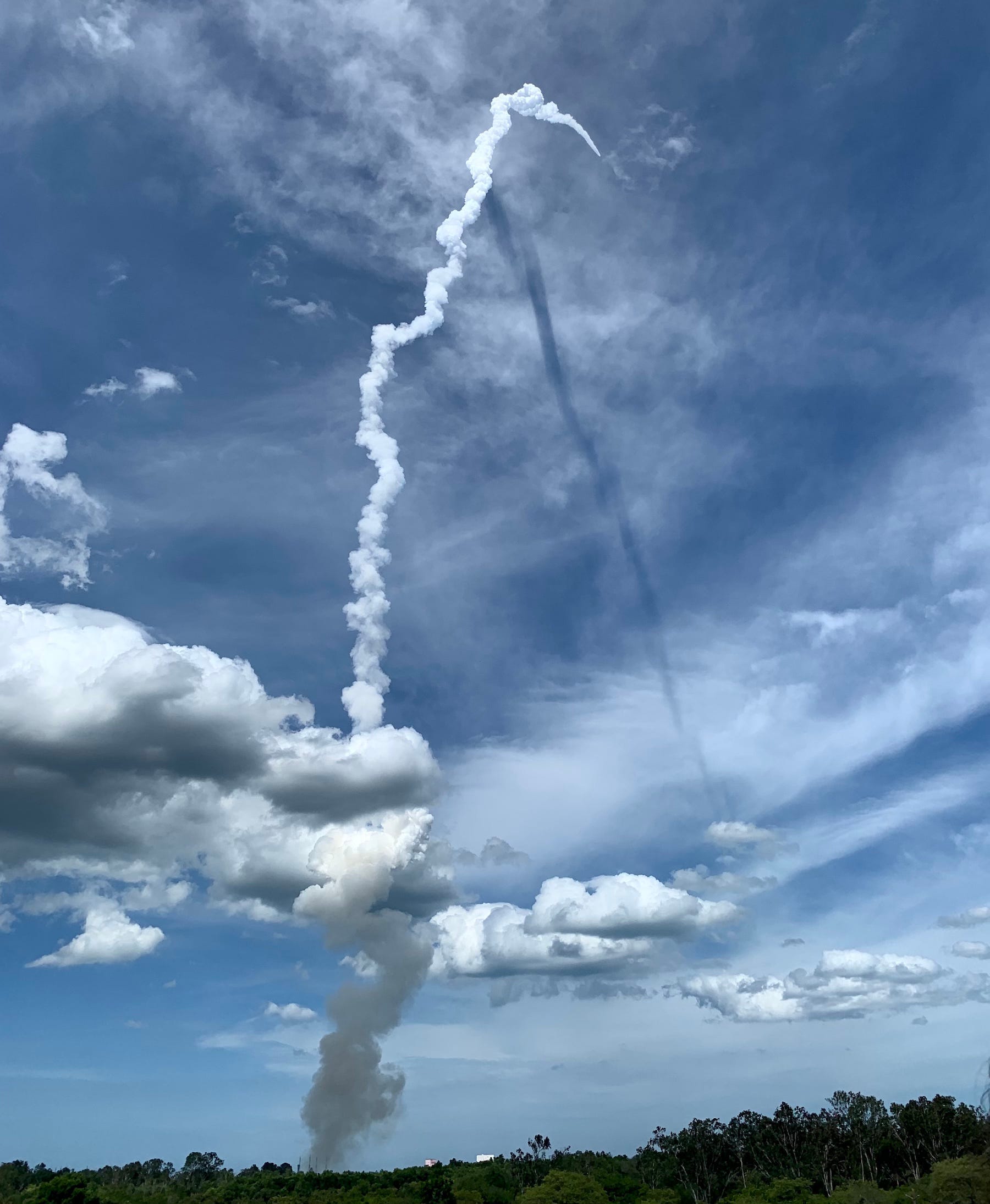
The Moonbound Chandrayaan 3’s launch aboard a GSLV Mk III rocket had a shadow trail. Metaphorically too. Image: Jatan Mehta
Many thanks to the Takshashila Institution, SkyServe and Arun Raghavan for sponsoring this month’s Indian Space Progress report.
PSLV to play crucial role in testing a European capsule
Europe-based “The Exploration Company” will launch their 40-kilogram, 60-centimeter “Bikini” capsule on ISRO’s PSLV rocket in January 2024 as a commercial loft. The company moved its launch vehicle from Europe’s own Ariane 6 to the PSLV because the former has been repeatedly delayed. Bikini’s flight, with a peak altitude of about 500 kilometers, will test the capsule’s performance during thermal reentry into Earth’s atmosphere.
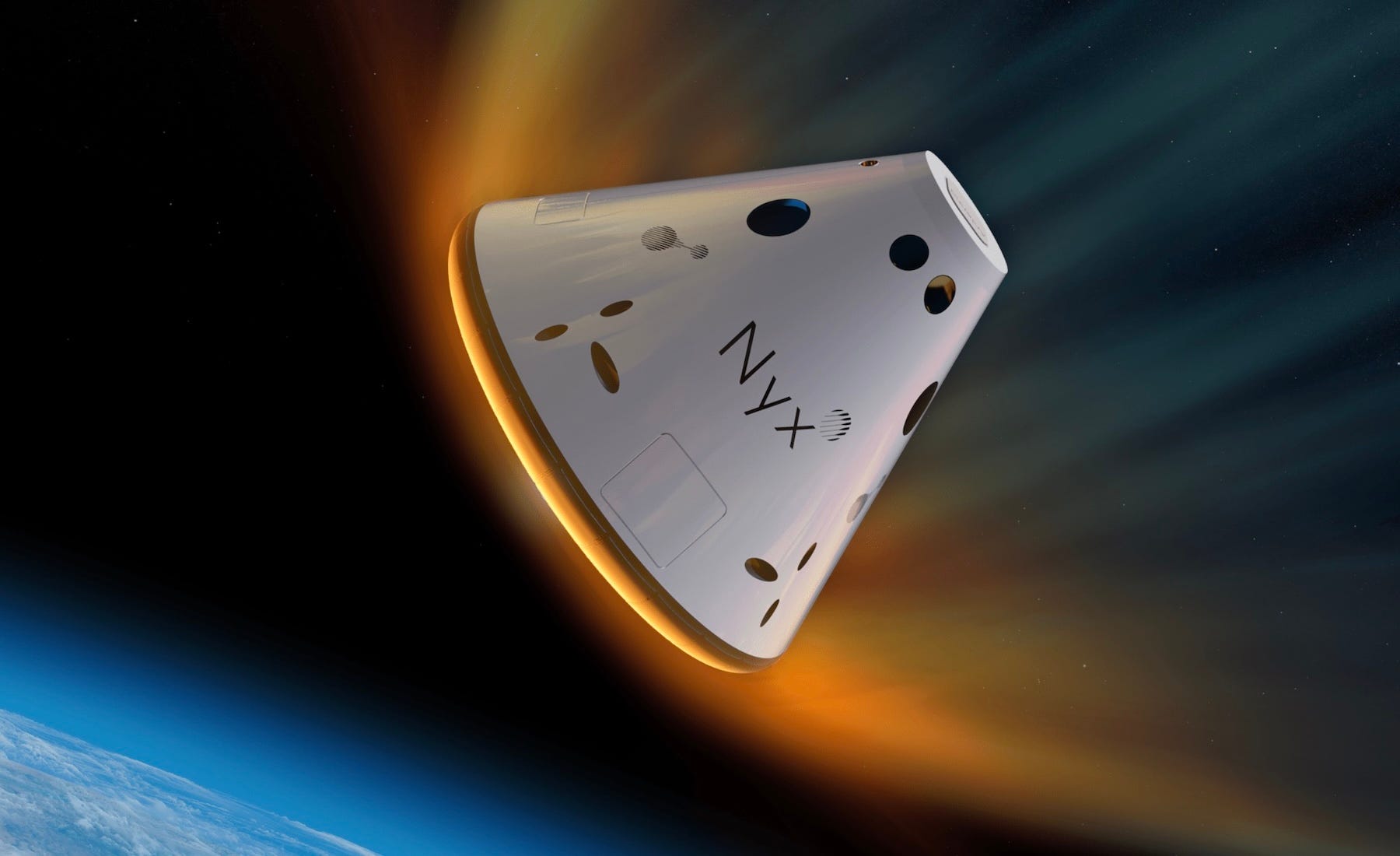
This initial demonstrator will allow the company to tweak and test the reentry of a larger, 1,600-kilogram capsule later on via a SpaceX Falcon 9 launch, which itself will lead to the late mid-decade launch of a full-scale 8,000-kilogram Nyx capsule. Coming back to Bikini, Chethan Kumar reports that both to reach the desired peak altitude of about 500 kilometers and to subsequently dip to about 120–140 kilometers before reentry, the Bikini capsule will rely on the PSLV rocket’s PS4 upper stage for propulsion. This makes the PSLV even more integral to the mission than being a space drop-off vehicle.
A small boost for India’s most powerful rocket
As part of ongoing gradual upgrades to the GSLV Mk III, now known as LVM-3, ISRO finished qualifying the rocket’s cryogenic upper stage engine on October 9 for an increased thrust level of 22,000 kilograms—up from the previous 19,000. Here’s a video of one of the tests.
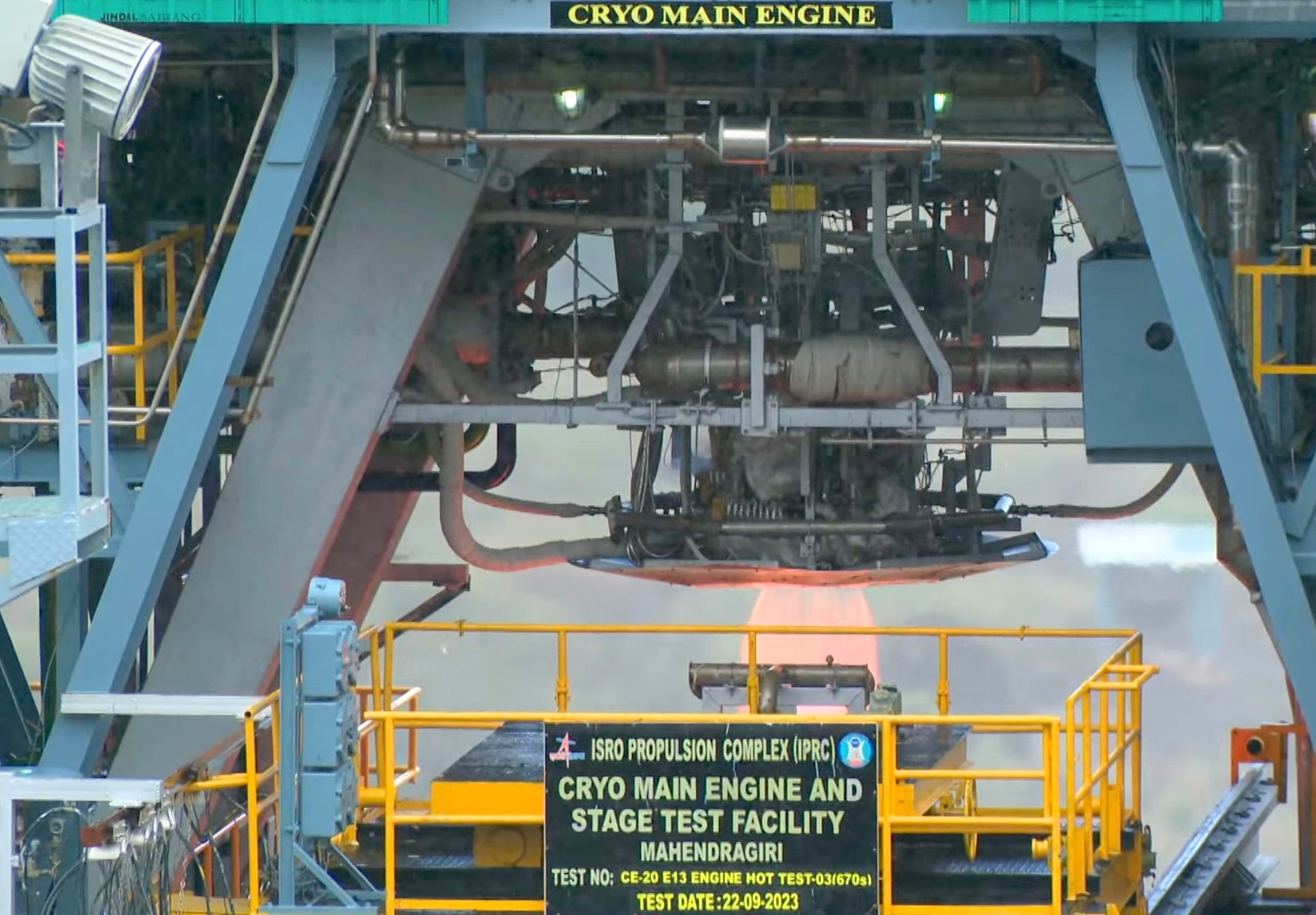
The LVM-3 is India’s most powerful rocket, which recently launched Chandrayaan 3 and two batches of commercial OneWeb satellites. While the boost to its upper stage increases the rocket’s payload capacity by a bit, it’s the upcoming core stage upgrade to an indigenously built 2000 KiloNewton semi-cryogenic kerolox engine instead of the existing two Vikas ones that will increase the rocket’s capacity to GTO from ~4,000 kilograms to ~6,000. Variants of this semi-cryogenic engine will also power parts of India’s upcoming heavy-lift and reusable launch vehicle respectively. The LVM-3 is also ISRO’s rocket of choice for the ambitious Gaganyaan mission to indigenously send humans to space mid-decade.
More private and commercial space updates
- IN-SPACe, an Indian Department of Space (DOS) entity created to “promote, hand-hold, guide and authorize space activities” of private players in the country announced on October 10 that ISRO’s new SSLV rocket will get a dedicated 8 square-kilometer spaceport by 2025 at Kulasekarapattinam in Tamil Nadu for private, commercial launches. Relatedly, IN-SPACe transferred five technologies developed by ISRO-SAC over to the private sector for commercializing them, Shyam Upadhyay reports. These notably include a mini X-band synthetic aperture radar and a ground penetrating radar, and a mobile satellite service terminal.
- As private company Agnikul prepares for its first suborbital launch with Agnibaan within two months, the company has raised $26.7 million to start working towards multiple orbital launch attempts post that.

- KaleidEO, a subsidiary of Bengaluru-based SatSure making Earth observation satellites, announced on September 12 that it has successfully employed deep learning in orbit to analyze in near real-time images taken by partner Satellogic’s satellite. This makes KaleidEO the first Indian company to demonstrate edge computing in space. Relatedly, SatSure raised $15 million in August with an aim to build KaleidEO’s four optical and multispectral 100-kilogram satellites for launch by end of 2025.
- Dhruva Space announced it will set up a 26,000 square-meter spacecraft manufacturing facility in Hyderabad, where the company is based, over the next five years.
- Amazon Web Services signed an MoU with ISRO and IN-SPACe to offer some free cloud computing services to startups and research institutes under the AWS Activate program.
More Indian space
- In a September 8 joint statement during US President Biden’s visit to India, the two countries announced that they intend to increase coordination on planetary defense. This includes US support for India’s participation in asteroid detection and tracking via the Minor Planet Center, the official worldwide organization for observing and reporting astrometric observations of minor objects.
- The Indian Space Association (ISpA) and the French Aerospace Industries Association (GIFAS) signed an MoU during the 2nd annual Indian Space Conclave on October 9 to catalyze business ties between the swarm of Indian and French space companies part of these two associations. The partnership will also aim for frequent academic exchanges.
- The New York Times continues to misrepresent Indian space (extended version)
